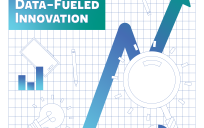For those who aren’t experts, data science can seem like a sport that one doesn’t know the rules of—confusing, intimidating, and best left to the pros.
But the reality is, data can be used successfully and impactfully by anyone. Even if metrics seem outside of your comfort zone, with a little knowledge, you can start regularly using data in your daily professional (or personal, if you’re so inclined) life.
This was the topic of the GovLoop online training, Don’t Hide From Analytics: How to Get Comfortable Working With Data. Tony Bland, Senior Data Engineer at the National Geospatial-Intelligence Agency, shared tips for those looking to put metrics to work at their agencies.
Bland began the training by reminding attendees that data science is not magic. This means that it will not solve all your problems with the wave of a wand, but it also means that it is a comprehensible discipline that anyone is capable of being proficient in.
To use metrics successfully, however, it is necessary to follow some best practices.
“The impediments to using data successfully aren’t always things that are readily apparent,” said Bland. This means that one must take their time planning before launching into a data analysis project.
The right questions matter, said Bland. Data teams need to have a true understanding of the problem they’re trying to solve before they begin throwing data at it.
Bland was careful to point out that the more clearly defined the problem statement is, the better. Someone hoping to put data to use must also understand what information is actually needed.
It also matters that the data available be what Bland termed the “right” data. His advice for identifying and using high-quality data was:
- Use centralized repositories over static flat files
- Stay as close as possible to the data source
- Use machine generated data over human generated data
It’s important to remember that the quality of your analysis, and its usefulness to your organization, is tied to the quality of the data that you are able to utilize—which is why Bland was also adamant that organizational leadership should ensure that the right datasets are available, so that employees are empowered to implement metrics in their work.
From both an individual and leadership perspective, it is also important to consider what technology and skills go into a successful data project. On the one hand, said Bland, it is possible to use almost any of the myriad data processing options out there to conduct your analysis. What you feel comfortable using, be it SQL, Python, or something else, will certainly play a role in how your analysis is conducted.
However, said Bland, it is also important to consider what makes the most sense, for the project and also from an organizational perspective. As he put it, “data science platforms are not one-size-fits-all.” You have to ask, “What languages are supported? What are the security options? Is it customizable?”
You also have to consider the skillsets of your team, so that you can play to individual strengths and ensure that those with specific expertises are able to utilize them.
Of course, when using data, the responsibility is on both leadership and employees to ensure that data usage rules and privacy policies are respected. In government especially, where there is the potential to access so much sensitive citizen information, a primary concern of any data analysis project must be that it is following applicable rules and regulations to ensure privacy.
Bland ended the training with an encouraging note, reminding us that we’re not alone in our quest to get comfortable with metrics. There’s a whole community of people who can share information and expertise, and everyone who is proficient with data analysis once was once like us—slightly intimidated, but ready to learn.





Leave a Reply
You must be logged in to post a comment.